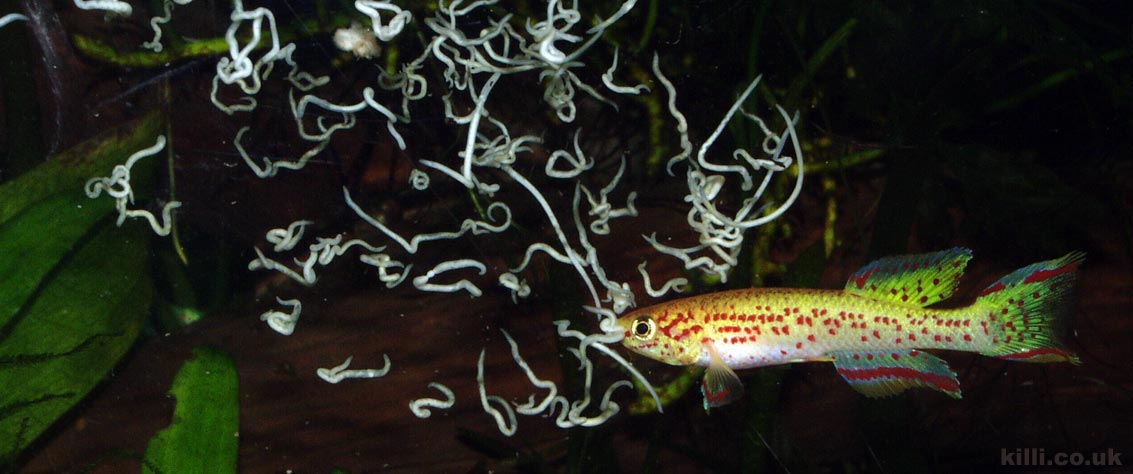
White worms (Enchytraeus albidus) are a fantastic treat for adult killifish, and they are rarely turned down. They are aquatic-disease free, are full of fat and protein and we all know how much fish enjoy them. Adult worms are typically 2-3cm in length, the perfect sie for most adult killifish. They can stay alive in water for days, as long as the water temperature is below around 27°c. Luckily culturing white worms is very easy, requiring very little attention, or effort by the keeper. Get the conditions right and you are guaranteed lots and lots of free fish food.
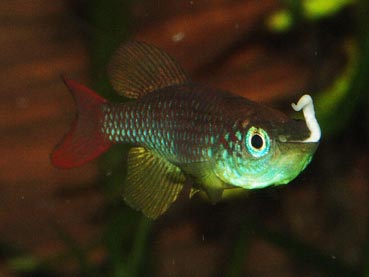
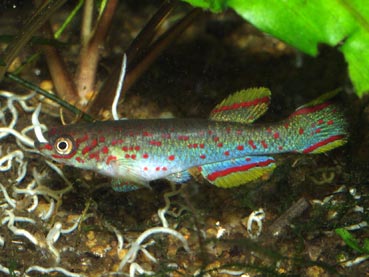
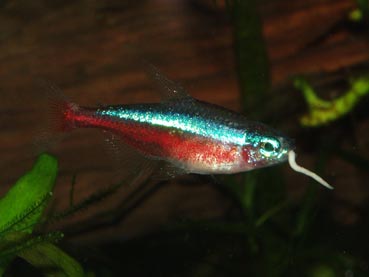
The worms and media are kept in a thick-walled polystyrene box, loosely lidded. Shallow wide boxes with a larger surface area are best; you only need a few 2-3 deep inches of media, and the larger the surface area, the more worms you can produce. As is the case with fish tanks themselves, it seems that larger cultures are more stable and offer greater long term success.
Each culture is fed and harvested at the same time approximately every 4-5 days. Cultures live outside (well protected from rodents, pets and the elements, maybe a shed, balcony or garage) all year round. Harvests do vary with the seasons, its often the case that no worms are available in the very hottest and very coldest weeks of the year; its best to give the worms a break, as they are not breeding at this time anyway. Keep them roughly between 8°C and 18°C and they should be fine. They will briefly tolerate temperatures out of this range, but will die if it remains in the mid twenties.
The worms are fed under glass 4-5" square, each culture having 3-5 feeding areas. The worms start to consume the food from below and the sides. Keeping it under glass helps protects the food from flies, prevents the food from going moldy, and from drying out, but also provides a good spot for the worms to gather. Harvesting is easy, simply scoop the worms from around the leftover food, or lift the 'food lump' and scoop out more. One culture with 3-4 feeding squares can feed several hundred fish about once per week.
Culture media does not seem to be critical, a blend of coir (45%), peat/compost (45%), a small amount of sand (10%), maybe a handful of lime if you've got it. Cultures will turn acidic eventually and should either be replaced with new cultures if production drops, or partially replaced continuously (I take a few handfuls of media to a fish auction every now and again, and then top up the old culture). If you do not want to subculture too often, activated carbon can be added to the media. The media should always be damp, yet never waterlogged or sodden.
To this you simply add your white worm starter culture.
When you want your fish to breed you fatten them up. The same thing goes for white worms. I use dog biscuits and sunflower oil. Its cheap, easy to make and guarantees you handfuls of the fattest worms. Simply boil up a pan of water, add lots of dog biscuits and a serious dash of oil. I can't tell you exact amounts here, but you want to have a thick paste; NOT liquid, but barely solid. It does harden more as it cools. I add probably about 50ml oil / litre of worm food. I then bag it up and freeze it.
Some people use bread soaked in milk as their white worm food. Although worms will eat this, in my experience they seem to prefer the dog biscuit recipe.
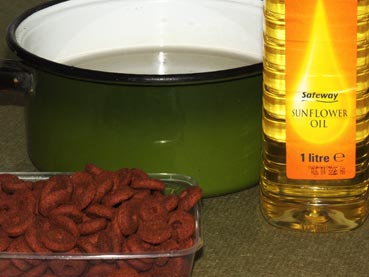
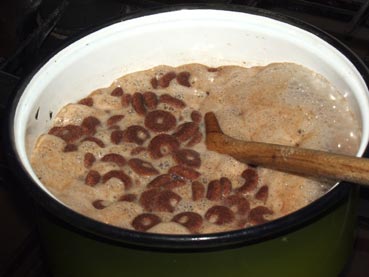
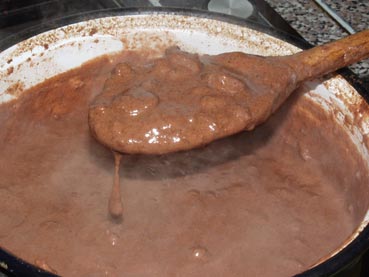
It's said that white worms make your fish fat. This is rarely a problem with annual fish with a high metabolism, and they certainly don't when you feed them only once or twice each week.
White worms are related to earthworms, and as such they tend to head under ground as soon as they can (where they will eventually die, and pollute the tank). When not feeding in bare bottomed tanks it best to fed only quantities that the fish will eat immediately. Unfortunately apple snails also love white worms and can quickly hoover up the whole feeding.
White worms survive for days in tanks, as long as the water is cool. At around 27 degrees C the worms start to 'straighten out', and die. The fish will no longer touch them and unless you spot it quickly they'll pollute the water.
Worms not eating their food is a bad sign. In my experience food rarely, if ever, molds or sours in a healthy culture. If this is happening, probably time to set up a new culture.
$45
$28
$36
$16
$20